The history of a television news station can be told from many perspectives. Some histories may frame a discussion around the context of national news media, others may focus on a station’s affiliation and ownership, and others still may hone in on a broadcast technology perspective. WSJV’s story should be told through all these lenses. This post will address WSJV’s chain of ownership, network affiliations, and changing production technologies. We can explore these topics through WSJV’s countdowns. These are different from the countdown you might see on film leader. These video countdowns appear as 5-10 second clips between news production segments on WSJV library tapes. They generally provide a WSJV logo, affiliate logo, date, and countdown on top of a background image. The bulk of videotapes in the WSJV News Collection have these countdowns between each news production component. An interesting question is: how can we track the developments of WSJV through these media artifacts? What information do they tell us–or not?
The WSJV News Collection contains videotapes dated as far back as 1981, but the WSJV station began in the 1950s. In March 1954, WSJV started broadcasting as an ABC, NBC, and CBS affiliate station in Elkhart, Indiana. When the South Bend-based WNDU signed on in 1955, it took the NBC affiliation and WSJV transitioned into a primary ABC affiliate. An “affiliate station” is a local station that signs a special agreement with a major broadcasting network. The local station receives a quota of major network programming (for example, a popular sitcom) in exchange for certain agreements such as revenue sharing. These affiliation agreements were hugely important in the 1950’s as American broadcast media transitioned unevenly from radio to television. Local stations could gain viewers through popular programming (ABC, for instance, brought with it American Bandstand and Disney programs like The Mickey Mouse Club). In response, higher viewership brought increased revenue to the station and the major network. This network/station affiliate relationship remained central to WSJV’s operation until its closing.
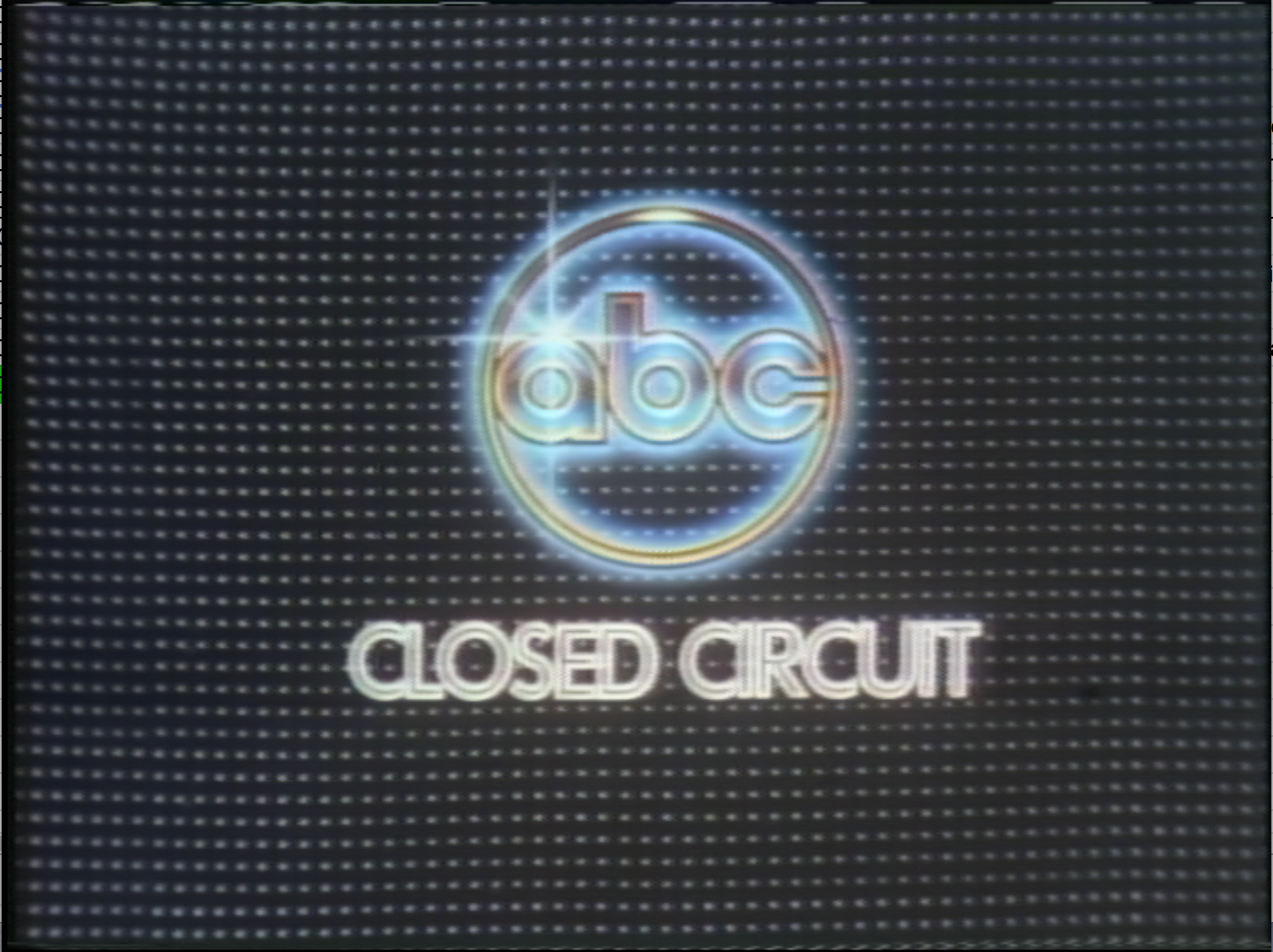
WSJV likely used a range of media in broadcast production before the dates of the Indiana University Libraries Moving Image Archive (IULMIA) collection. Before videotape, stations could only record broadcasts using film kinescopes. Kinescope technology allowed stations to record broadcasts for reference or re-airing, similar to a later videotape library. The WSJV News Collection does include some taped kinescope recordings. These are from the station’s coverage of the 1965 Palm Sunday Tornadoes, that killed 50 people in Elkhart County alone. WSJV taped this footage for later re-use, including a station retrospective in the early 2000’s.
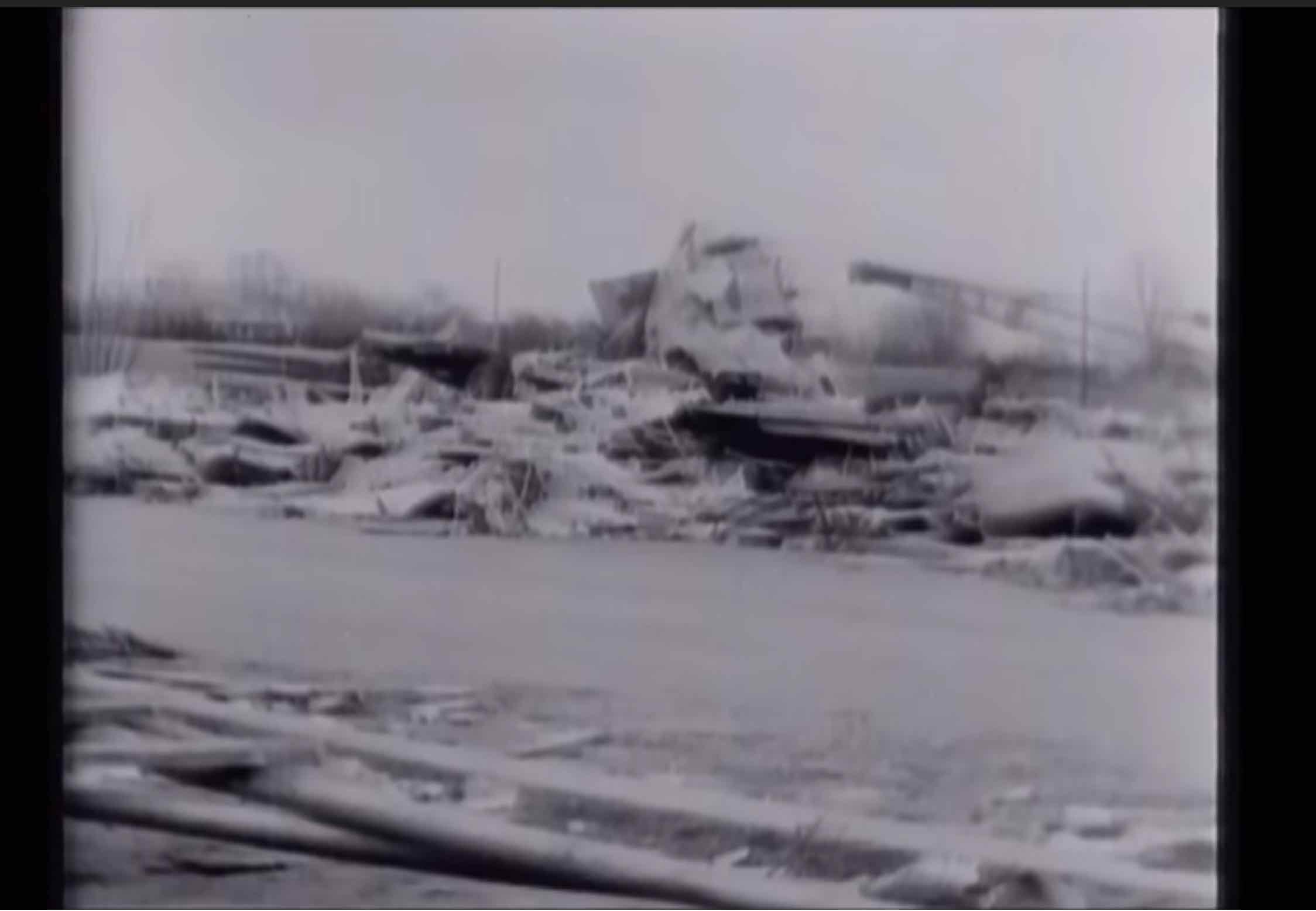
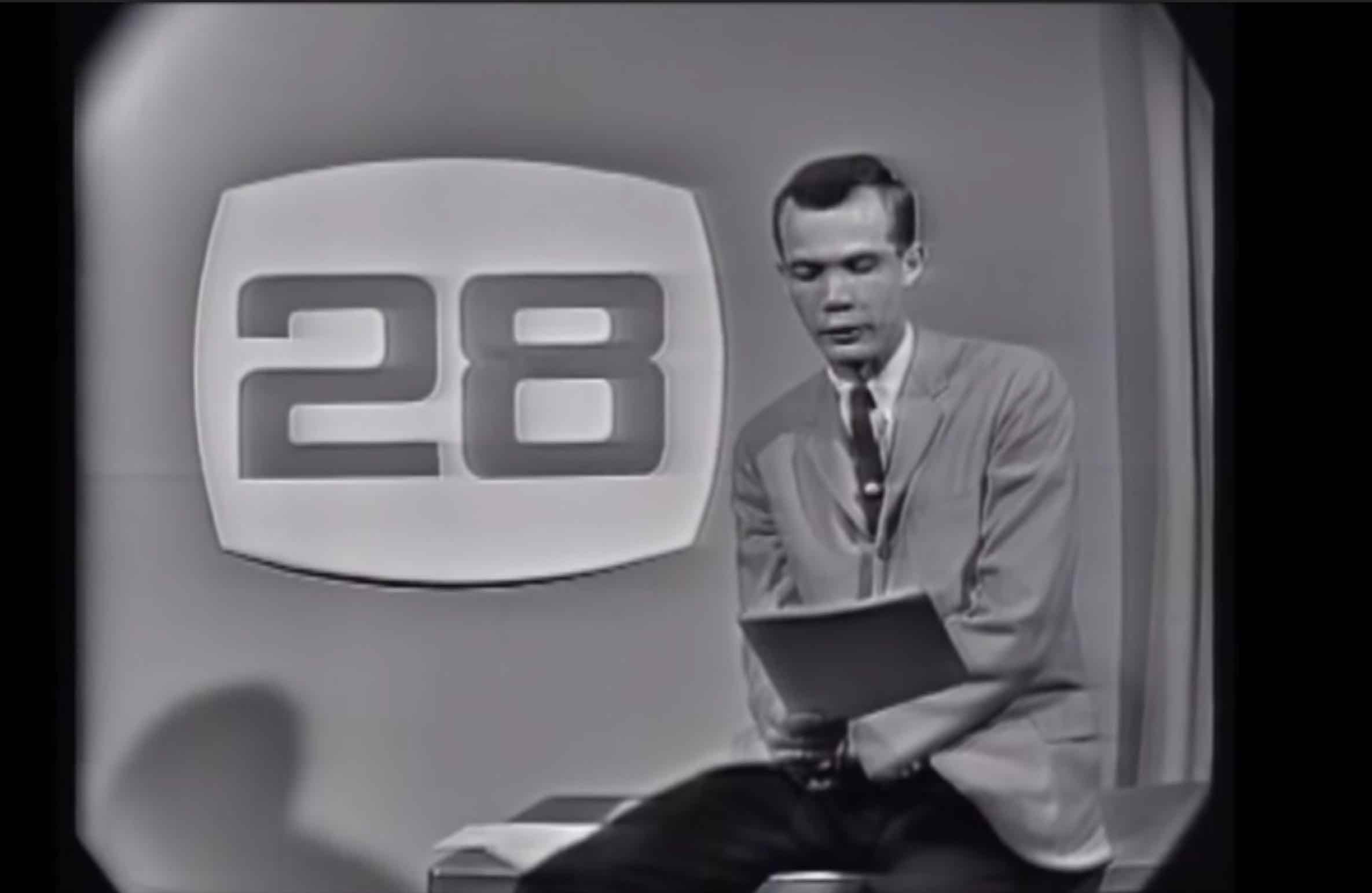
The Palm Sunday coverage came less than a year before WSJV transitioned to color broadcasts. In 1966 the station started airing ABC packages in color, and by 1968 WSJV aired all of its local programming in color too. Throughout the 1960s WSJV probably transitioned fully from using film to videotape during broadcast production. We are not sure what video formats–2 inch helical scans, ½ inch open reel, etc.–WSJV used during this time. By the early 1970’s, however, most television news was produced using videotape rather than film.
The 1970s was a decade of growth for WSJV–in part due to ratings growth for ABC as well. In 1970 WSJV built a new 1,050 foot tower and transmitter, increasing the station’s signal strength 19 times over and making it one of the most powerful UHF stations in the country. In 1972, the station moved to its most current location on Oakland Avenue in Elkhart. The building still stands today. In 1974, WSJV got a new owner: Quincy Media. This was due to changing FCC regulations (WSJV’s original owner, Truth Publishing, had to divest because it also owned the local newspaper The Elkhart Truth), and Quincy’s huge television expansion in the 1970’s. All these details go to show:
- The consequential role large corporations have in local television stations
- The rapid business and technology changes involved in local television news production
These themes are evident in the countdown footage from the WSJV News Collection. The countdowns appear across different videotape formats. WSJV didn’t use one specific tape format at a time, so there is chronological overlap between the Umatics, VHS, and DVC tapes.
Here is the first example, from a March 1982 Umatic tape:
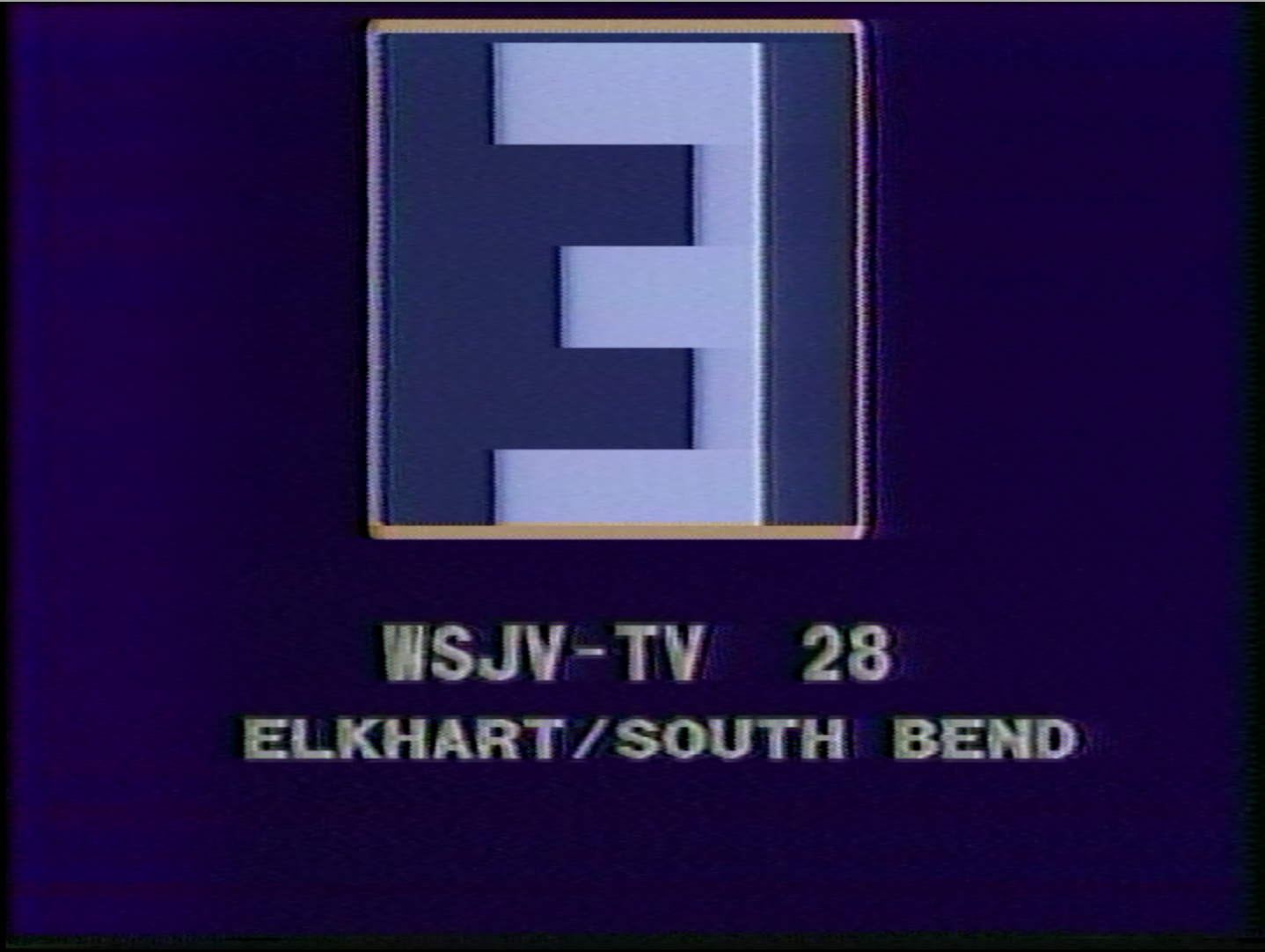
This example is pretty basic. It includes a credit line for WSJV and its channel number (28), a location line for Elkhart/South Bend, and an animated numerical counter. The Umatic tapes in the collection from the 1980s do not ubiquitously contain countdowns between production segments, but the countdowns represented are of this simple iteration.
Sometimes these countdowns can even tell us how the station operated. Here is an interesting example that shows how WSJV used their tape library:

This countdown is from a September-November 1990 Umatic tape. The countdown features a nighttime shot of the WSJV station building, a compound WSJV 28/ABC logo, a location line for Elkhart/South Bend, and an animated numerical counter.
On the same Umatic tape, there is a different countdown for September 19, 1990:
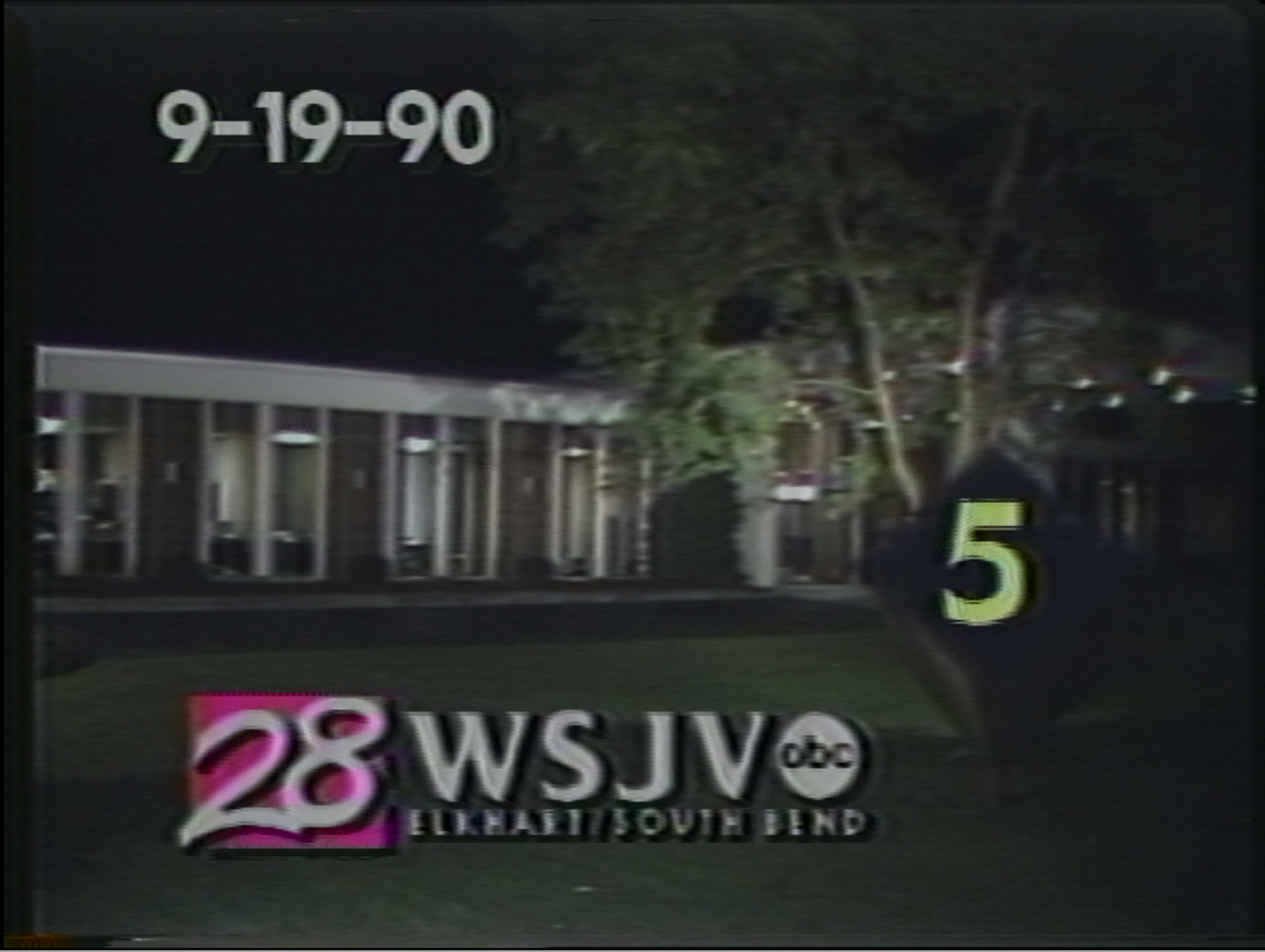
The countdown here is similar but not identical. The WSJV channel 28 logo appears before the ABC logo, and this countdown includes a specific date. Why would two different countdowns appear on the same tape? Although we are not yet certain exactly how WSJV employees assembled these library tapes, some clues indicate the answer. Take another look at the ABC Closed Circuit monitor image above. This image didn’t appear to viewers during WSJV news broadcasts, it was just a test image producers could use on studio monitors. It appears on a tape from the WSJV library because employees could record library tapes straight from these broadcast monitors. The same likely goes for these 1990 countdowns. They would have appeared on broadcast monitors in the studio between segments. The countdown allows the producer to cue up a segment exactly. These two countdowns probably played on different monitors in the production studio around the same time. It could be that certain monitors played certain countdowns, or it could be as simple as a producer incidentally created a second countdown for his or her immediate use.
The important thing here is to see how these countdowns can be understood as “internal documents” for WSJV. They give us an understanding of the studio’s self-image throughout time.
In 1995, WSJV entered an agreement that ended their ABC affiliation and established a new network affiliation with Fox. In the early 1990s, Fox received rights to broadcast NFL games and sought out new affiliations across the country. It is probable that the strong Chicago Bears fanbase in Michiana incentivized WSJV to make a Fox affiliation agreement. In October 1995, the station started broadcasts as a Fox affiliate station. Another Michiana television station, WBND, took the ABC affiliation. Let’s take a look at a countdown from WSJV’s early Fox days:

This example is from a VHS tape dated October 1995-January 1996. A few changes are immediately apparent. First, the production aesthetics have changed quite a bit from the early 1990’s examples above. The background image shows a busy production studio rather than the exterior of the building. The text and animation components take up a larger portion of the screen. The countdown animation appears twice: one that looks like a digital clock timer (bottom left) and a rotating number (top right). The overall effect is much “busier;” this countdown was definitely designed to evoke the rapid-paced image of 24-hour news networks.
Another key difference: WSJV has a reduced presence on this countdown. Rather than the large “28 WSJV” logo in the September 1990 example, here the main credit is given to “Fox 28.” WSJV receives a smaller credit line below and a location credit of South Bend (rather than Elkhart/South Bend). Even though the station was located in Elkhart, WSJV was strongly associated with simply the South Bend region during its Fox affiliation. South Bend is a more widely recognized city (home of Notre Dame) and is identified with a Chicago sports fan base. It’s worth considering here: what shifts are happening here? Can we trace a trajectory away from the “local-ness” of the station? How can we characterize the change in WSJV’s internal image?
As we move into the 2000’s, we see fewer and fewer of these countdowns in the WSJV tape library. Fox logo usage gets more and more ubiquitous across the station’s imagery. Here is a logo that viewers saw during broadcasts from the local channel in 2009:

Any trace of location or local station name is gone here. Instead, we get the glossy intro animation we associate with major network news: quickly shifting bars of color and line behind a big network logo. Programming, too, has become closely tied with the network–most people now associate the informal “morning show” format with networks like Fox.
Although I hate to tell a story of decline, WSJV’s history ends with a loss. In 2016 Quincy Media transferred WSJV’s Fox affiliation to WSBT-TV in exchange for ABC and CW affiliations at a Peoria, Illinois station. The sixty-two year old local news station aired its last news broadcast July 29, 2016. WSJV staff all either transferred to other stations or were laid off.
Although the reasons for the station’s closure are complex, I hope that these historical details give you some context for the event. Local media is an important form of self-expression. I encourage you all to ask what happens to that expression when larger entities–such as major networks and owning companies–are so closely involved.
The following video is a supercut of these logos and countdowns. The countdowns are bracketed by the surrounding footage on each tape. The countdowns from the 1980’s and the first September 1990 countdown appear at the beginning of tapes, so other segment footage only follows the countdowns. The September 19, 1990 and October 31, 1995 countdowns are bracketed on both sides by other footage on the tapes. This gives you a sense of how the countdowns separate segments on the WSJV News Collection videotapes.
Leave a Reply